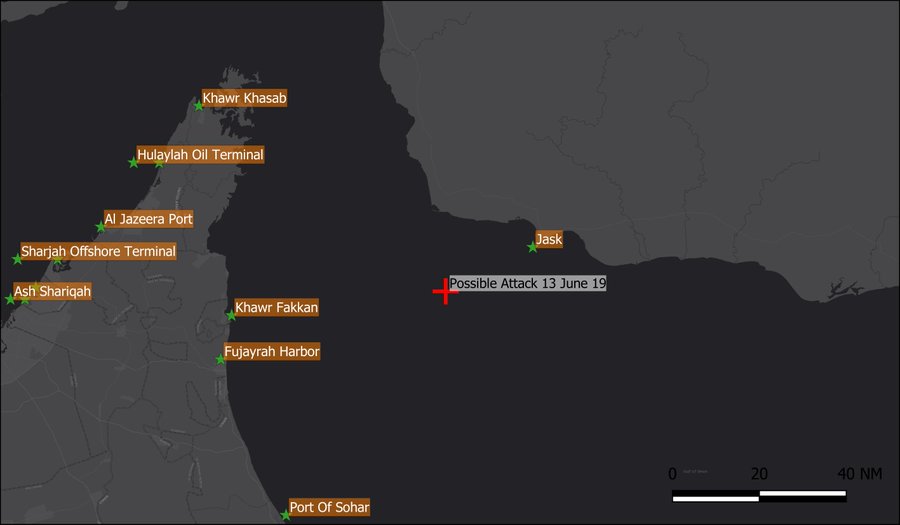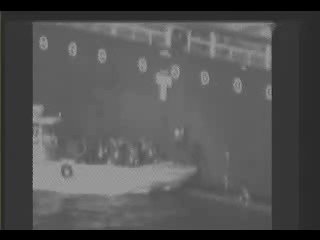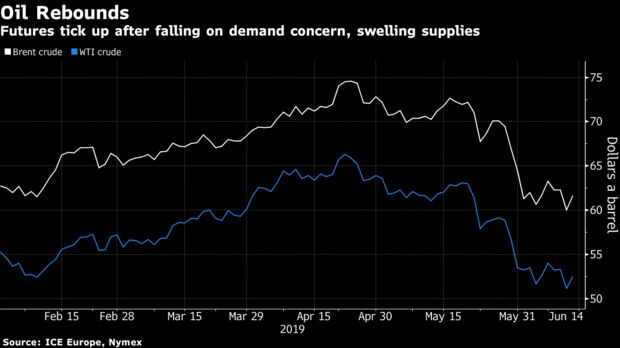“It’s clear that Iran is behind the Fujairah attack. Who else would you think would be doing it? Someone from Nepal?” he told journalists at a US embassy briefing.“There is no doubt in anybody’s minds in Washington, we know who did this and it’s important Iran knows we know,” he added.
“In this meeting, concern about suspicious actions and sabotage in the region was talked about, and we said that we had previously predicted that such actions would occur to create tensions in the region,” said Iranian Foreign Minister Mohammad Javad Zarif following talks with his Indian counterpart Sushma Swaraj in New Delhi on May 14th.
“This is only the latest in the series of attacks instigated by the Republic of Iran and its surrogates against American allies and interests. They should be understood in the context of four years of unprovoked aggression against freedom-loving nations,” he said.
“U.S. Naval Forces in the region received two separate distress calls at 6:12 a.m. local time from the motor tanker (M/T) Altair and a second one at 7a.m. local time from the M/T Kokuka Courageous.Both vessels were in international waters in the Gulf of Oman approximately 10 nautical miles apart at the time of the distress calls. USS Bainbridge was approximately 40 nautical miles away from the M/T Altair at the time of the attack, and immediately began closing the distance.At 8:09 a.m. local time a U.S. aircraft observed an IRGC Hendijan class patrol boat and multiple IRGC fast attack craft/fast inshore attack craft (FAC/FIAC) in the vicinity of the M/T Altair.At 9:12 a.m. local time a U.S. aircraft observes the FAC/FIAC pull a raft from the M/T Altair from the water.At 9:26 a.m. local time the Iranians requested that the motor vessel Hyundai Dubai, which had rescued the sailors from the M/T Altair, to turn the crew over to the Iranian FIACs. The motor vessel Hyundai Dubai complied with the request and transferred the crew of the M/T Altair to the Iranian FIACs.At 11:05 a.m. local time USS Bainbridge approaches the Dutch tug Coastal Ace, which had rescued the crew of twenty-one sailors from the M/T Kokuka Courageous who had abandoned their ship after discovering a probable unexploded limpet mine on their hull following an initial explosion.While the Hendijan patrol boat appeared to attempt to get to the tug Coastal Ace before USS Bainbridge, the mariners were rescued by USS Bainbridge at the request of the master of the M/T Kokuka Courageous. The rescued sailors are currently aboard USS Bainbridge.At 4:10 p.m. local time an IRGC Gashti Class patrol boat approached the M/T Kokuka Courageous and was observed and recorded removing the unexploded limpet mine from the M/T Kokuka Courageous.The U.S. and our partners in the region will take all necessary measures to defend ourselves and our interests. Today’s attacks are a clear threat to international freedom of navigation and freedom of commerce.The U.S. and the international community, stand ready to defend our interests, including the freedom of navigation.The United States has no interest in engaging in a new conflict in the Middle East. However, we will defend our interests.– attributable to Capt. Bill Urban, Lead Spokesman for U.S. Central Command”
“The video is not enough. We can understand what is being shown, sure, but to make a final assessment, this is not enough for me,” German Foreign Minister Heiko Maas said.
“Before we blame someone, we need credible evidence,” the official said.
“A mine doesn’t damage a ship above sea level,” he said “We aren’t sure exactly what hit, but it was something flying towards the ship.”
“In the hours before the attack on the two tankers in the Gulf of Oman on Thursday, the Iranians spotted a US drone flying overhead and launched a surface-to-air missile at the unmanned aircraft, a US official told CNN.The missile missed the drone and fell into the water, the official said.Prior to taking fire, the American MQ-9 Reaper drone observed Iranian vessels closing in on the tankers, the official added, though the source did not say whether the unmanned aircraft saw the boats conducting an actual attack.Still, it is the first claim that the US has information of Iranian movements prior to the attack.”
- On May 25, President Donald Trump declared that the US is sending 1,500 troops, 12 fighter jets, manned and unmanned surveillance aircraft, and a number of military engineers to counter Iran. Trump also approved an $8 billion sale of precision guided missiles and other military support to Saudi Arabia.
- The Abraham Lincoln carrier strike group and the USS Arlington amphibious transport dock, which carries marines, amphibious vehicles, and rotary aircraft, as well as the Patriot missiles, were deployed near the Persian Gulf.
- A strategic bomber task force was deployed at the US airbase Al Udeid in Qatar.
- The growing tensions in the Persian Gulf region allows the Trump administration to continue exploiting the “Iranian threat” to justify its internal and foreign policies. Inside the US, it will allow Washinton to increase spending on military-industrial complex even further. In terms of the foreign policy, the US got an additional justification to continue its hard-core anti-Iranian and pro-Israeli policy as well as to boost military and diplomatic presence in the Middle East.
- The geoeconomic goal of this provocation is to create tensions in the Persian Gulf region and near it (the western part of Indian Ocean). The growing threat to maritime security would increase the coast of logistical costs for key oil consumers. DHT Holdings and Heidmar, two of the biggest oil tankers operators in the world, have suspended new bookings to the Middle East and the Persian Gulf. The oil price gew. Insurance rates for logistical operations in the region are also expected to grow. This situation directly impacts China, one of the key oil consumers, and European states with a large industrial potential, like Germany. The pressure on possible economic competitors through economic (tariffs and sanctions), military and diplomatic means are the consistent policy of the Trump administration.
MORE ON THE TOPIC:
- Series Of Mysterious Attacks On Oil Tankers Around Persian Gulf
- Cruise Missile Strike On Saudi Airport Marks Start Of New Round Of Escalation In Middle East
- Smoking Gun? False Flag? U.S. Releases Video Allegedly Showing Iran’s Mine On Tanker Hull
- Japanese Tanker Owner Denies Ship Hit By Mine, Says Crew Saw “Flying Objects” Before Attack
River to Sea
 Uprooted Palestinian
Uprooted Palestinian 



























No comments:
Post a Comment